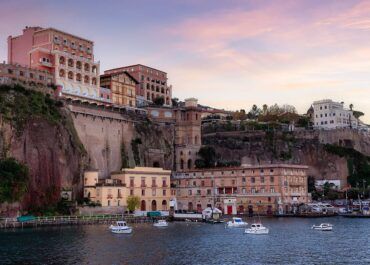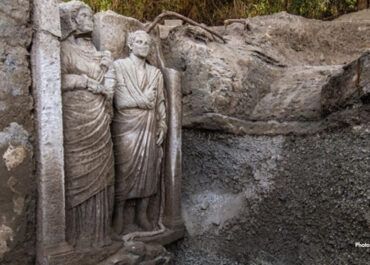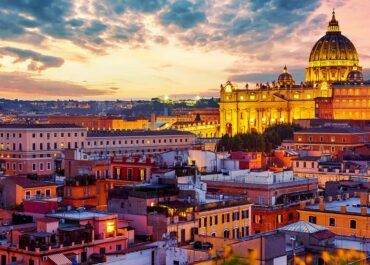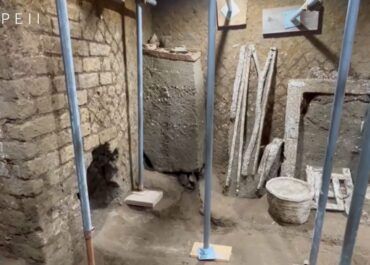2,000-Year-Old secret unveiled: The author behind a Herculaneum scroll identified
For centuries, scholars have been captivated by the mysterious Herculaneum scrolls—ancient papyri sealed in ash and lava during the catastrophic eruption of Mount Vesuvius in 79 AD. These fragile relics, preserved in the Villa of the Papyri ruins, represent one of the most tantalizing archaeological puzzles in the classical world.
Now, in a breakthrough combining cutting-edge technology and historical scholarship, researchers have successfully identified the author and title of one of these scrolls—a feat never before accomplished with such precision.
Ready to explore the wonders of ancient Italy firsthand? Book your private tour of Pompeii, Herculaneum, and Naples now and uncover history with a local expert by your side.
From Ash to Revelation: What the Scroll Revealed
The scroll in question, labeled PHerc. 172, housed at Oxford’s Bodleian Libraries, has been officially attributed to Philodemus, a Greek philosopher and poet from Gadara (modern-day Jordan). The newly discovered title? On Vices—a treatise exploring human flaws and the cultivation of virtue, rooted in the Epicurean tradition.
Though the work had been known to scholars, this particular scroll had not been read for nearly two millennia and may represent a previously untouched volume from the series.
This milestone earned the research teams a $60,000 prize from the Vesuvius Challenge, an international project aimed at decoding ancient texts using digital tools.
The Power of AI in Decoding the Past
The deciphering process was made possible through artificial intelligence, advanced imaging, and ink-detection algorithms. In July 2024, the scroll was scanned at the Diamond Light Source in Harwell, England—one of the UK’s leading synchrotron facilities.
The resulting data was shared globally, encouraging experts to collaborate in what became a digital race to unlock ancient secrets. Two teams—one led by Sean Johnson and the other by researchers Marcel Roth and Micha Nowak from the University of Würzburg—independently identified the elusive title.
According to Richard Ovenden, Bodleian Librarian, this discovery “demonstrates the transformative impact of AI on the humanities,” offering new ways to bring ancient works back to life without damaging their delicate physical form.
Philodemus and the Ethics of Pleasure
Philodemus (c. 110–30 BCE) was a central figure in the Epicurean school of thought. He emphasized pleasure and tranquility over rigid logic or political ambition. He opposed traditional rhetoric and argued that happiness could be attained through moderation, friendship, and intellectual reflection.
His philosophical writings comprise a large portion of the Villa of the Papyri’s collection, so discovering another scroll he authored came as no surprise to experts, but confirming the title is a significant leap forward.
The scroll’s full title—On Vices and Their Opposite Virtues, and in Whom They Are Found and for What—suggests a systematic exploration of moral character, fitting neatly into the known structure of Philodemus’ ethical works.
A Larger Puzzle Still Unfolding
While the author and title are now known, the scroll’s exact place within the larger On Vices series is still under examination. Some scholars believe the book number could be alpha (Book 1) or delta (Book 4)—a detail that may unlock further insights into Philodemus’ philosophy.
Other volumes in the series are already well-documented, including titles like On Wealth Management (Book 9) and On Arrogance (Book 10). If PHerc. 172 turns out to be the first book, its discovery could reshape scholars’ understanding of how Philodemus framed his ethical doctrine.
“This gives us a fantastic window into his thought process and opens the door to reconstructing the entire series,” said Michael McOsker, papyrologist at University College London.
Why This Matters
Beyond academic circles, this discovery is a testament to how modern innovation can unlock voices from the past, giving new life to ancient wisdom. With many scrolls still unread and ongoing efforts to decode them, Herculaneum may continue to surprise us for decades.
As the Vesuvius Challenge continues to support global efforts to unroll and read the remaining texts digitally, the future looks bright for historians, philosophers, and curious minds alike.









